Bikepacking her way 1500 km across the Balkans with a riding partner she hardly knows could have been a recipe for disaster, but as Nora Battermann explains in her beautifully crafted story, it turns out to be the trip of a lifetime. Find a comfy seat and enjoy our latest Armchair Adventure.
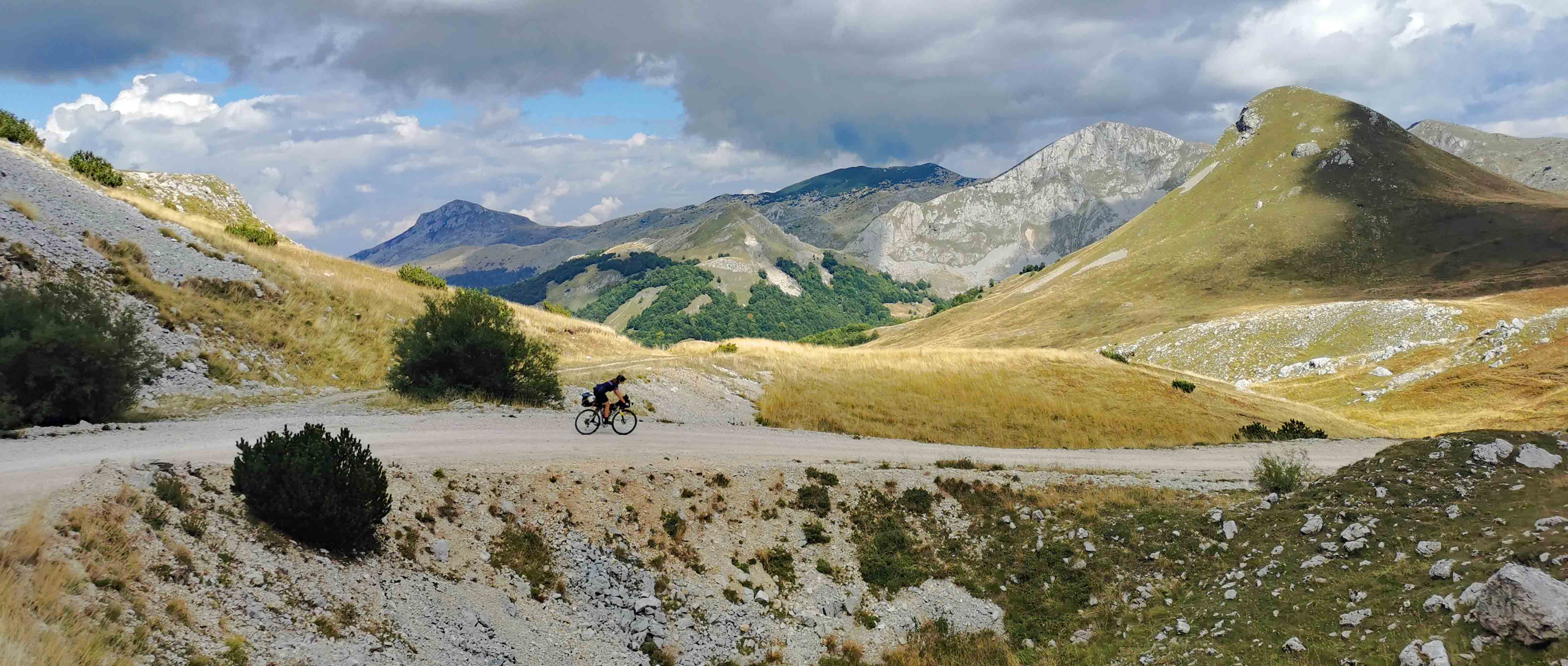
My reunion with Lissa takes an unexpected turn. Rather than enjoying a cosy brunch together, I find myself at the bike carriage of our train to Bologna, desperately pleading with the conductor not to close the doors just ten minutes before departure. Lissa’s train is more than two and a half hours late and she just about makes it onto the platform three minutes before our train is set to leave. The start to our bikepacking trip to the Balkans could certainly have been a bit more relaxed.
When it comes to Lissa and myself, I should mention that we met at the beginning of the year on a business trip. We started chatting and discovered our shared passion for gravel biking. Now, six months later, we find ourselves embarking on a journey to Albania, anticipating ten days of bikepacking. We have no clue whether we actually get along well enough to make it to the end, but we’ve openly discussed our expectations and both agreed to part ways in case things do not work out.
Two mornings after our stressful reunion we arrive in Albania, having taken a train from Munich to Bologna, then another to Bari, followed by a night spent on a ferry bound for Durrës. After some final preparations we set off. Navigating through bustling shopping streets, residential areas and the suburbs of Durrës, my initial concerns revolve around potential punctures due to all the shards of glass on the road. I vividly recall Lissa's earlier warnings about my choice of tyres – she checked more than once whether I truly wanted to ride with 40mm tyres and tubes. Despite her warnings, I stuck with my decision; my Cinelli Zydeco accommodating nothing wider than 40mm and while I lack experience with tubeless setups, I am confident in my ability to change and repair an inner tube. In hindsight, I acknowledge that an MTB would have offered a smoother ride. However, I've gained a lot of technical skills along the way, frequently redefining what I deem rideable on a fully packed gravel bike with 40mm tyres. And given the choice, I would definitely take my gravel bike again. That is also due to Lissa’s carefully planned route though, which was well adapted to my setup.
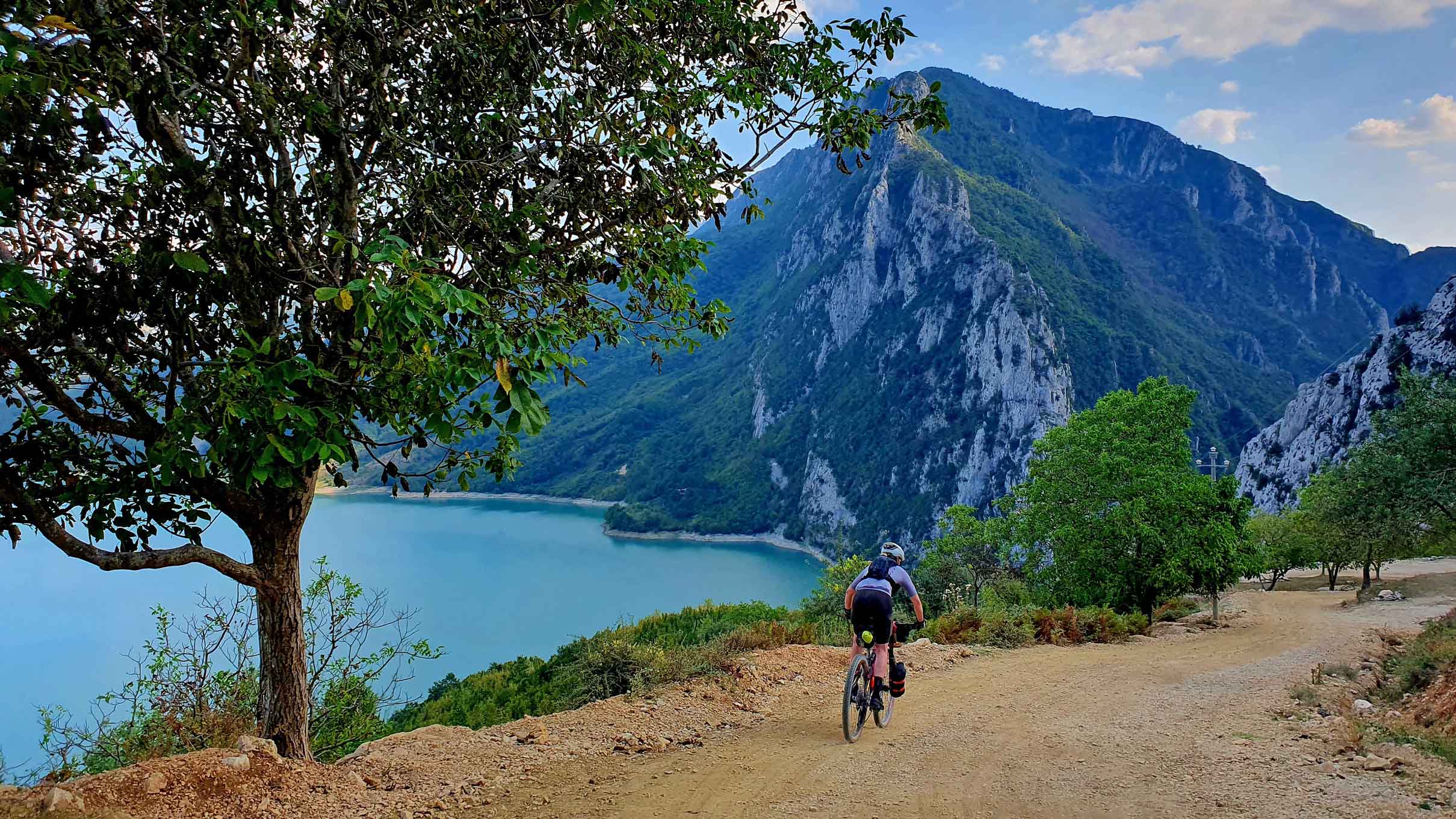
As we bid farewell to Durrës and approach the mountains, my confidence in my bike grows. The landscape is green and fertile and we pass fields and tree plantations. The initial 50 kilometres are flat and serve as an excellent warm-up on both tarmac and gravel. As we near our first ascent, the sun beats down from the sky and the wind whistles through the gorge we traverse on our way up to the Bovilla reservoir, leaving us drenched in sweat. However, the breathtaking view of the reservoir makes it all worthwhile and after a lunch break with a view of the lake, we embark on the more demanding gravel section of the day’s route. The rough gravel surface occasionally forces me to dismount and push my bike. Lissa, on the other hand, copes much better with her MTB.
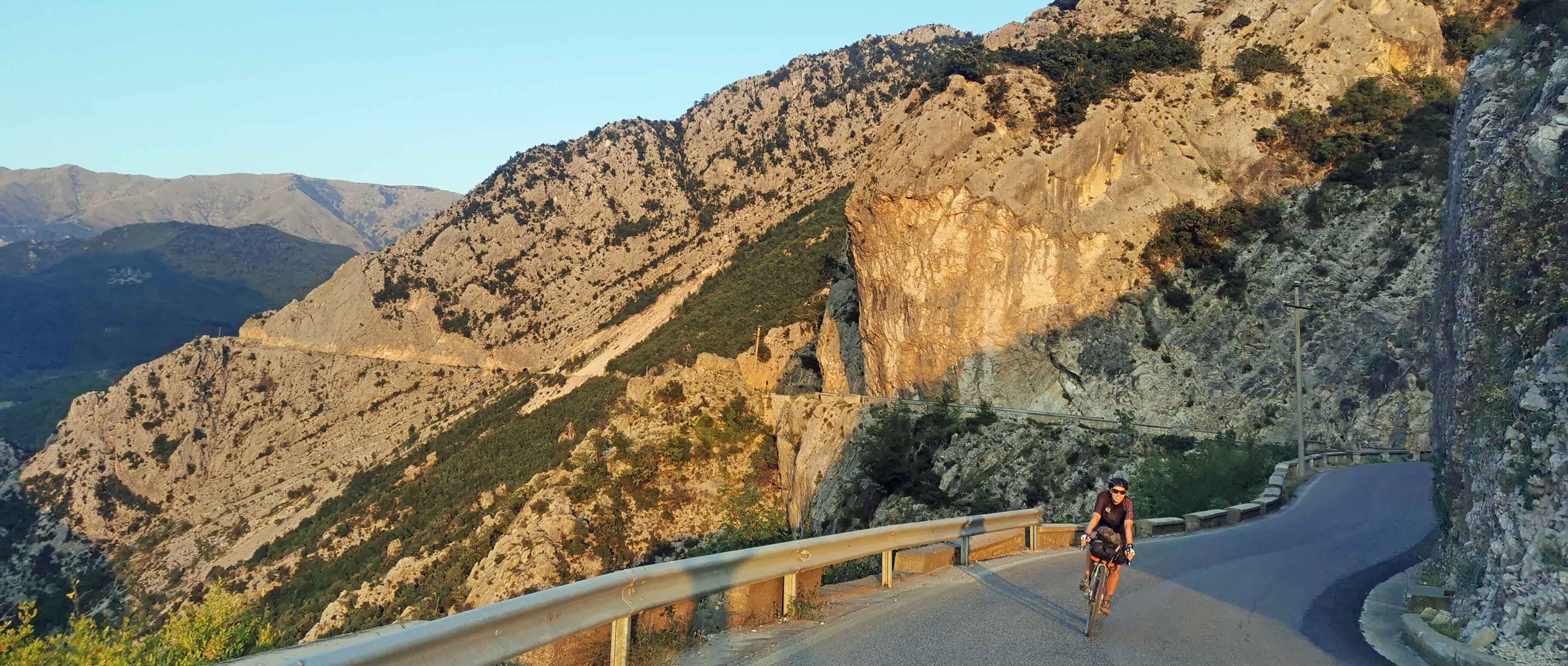
Struggling through the rough terrain is totally worth it though, as the hard work is rewarded with a picturesque descent during the golden hour. The tarmac road winds its way along orange rock faces and the sunset takes our breath away. The atmosphere just cannot be put into words. Soon after, we reach the campsite we’d been aiming for today, where the friendly and welcoming owner promptly provides us with an introduction to basic Albanian.

Once we have pitched our tents and enjoyed a warm shower, another highlight awaits - a home-made meal consisting of fresh tomatoes, olives, soup, goulash, meatballs, a kind of almond cream and baklava, among other treats. Later, as I lie in my inner tent, gazing at the stars and listening to the soothing chirping of cicadas, I reflect on the day's experiences. I realize that I could never have envisioned our first day being this amazing. I also wonder how today’s experiences and impressions could ever be surpassed – a question I am going to ask myself almost every evening from now on.
Our time in Albania is short - we only spend the next day and a half here. The landscape continually astounds us with its beauty, but it's the friendliness of the people that leaves the most lasting impression. Everywhere we go, people wave and smile. We communicate using gestures and expressions. One exception is a small village where a group of children run after us, laughing. Two boys, about nine years old, stubbornly keep up with us and as we finally have to dismount and push our bikes on the sandy gravel road, they catch up and warn us: "Danger! Danger! Wolf!" We guess that the likelihood of encountering a wolf here in broad daylight is quite low and continue forwards. One of the boys doesn't let up and we start chatting – although he claims that he doesn't speak English, communication is easy and he shares that he’s been learning English at school for three years. It's these heartwarming encounters that I associate with our time in Albania.
The border crossing into Montenegro is smooth and we don’t even have to present our passports at the pedestrian crossing, making our detour to the official checkpoint unnecessary. We turn off the main road and are faced with a steep climb in the sweltering midday heat with a continuous gradient of 10-15%. After completing two-thirds of the climb, we cool off at a water basin and pick fresh figs from a tree before we enter the last part of the climb which is a lot more pleasant to ride with a gentle gradient of around 3-5%.

At the top, we are greeted by a stunning view of Lake Shkodra, the largest lake on the Balkan Peninsula. For the rest of the day, we cycle up and down the southern shore of the national park, which is surrounded by mountains. In the evening, the next spectacular descent into the sunset awaits and leaves us almost breathless - the combination of the golden light, the green of the mountains, the lake below us and just letting it roll is simply breathtaking. And this is just the start to a total of 350 kilometres in Montenegro, which is going to captivate us over the next five days.

Initially, the landscape remains relatively unchanged - mountainous terrain with a lot of green, wild and quite unlike anything I've seen in Europe before. Yet, less than 24 hours later, having just negotiated the hairpin bends near Kotor, we suddenly find ourselves in a surreal-looking plateau characterised by yellow grasses and grey, rugged rock. It feels like the landscape in Montenegro changes its face at least three times a day and we can't stop marvelling. Our route constantly climbs and descends, predominantly on narrow tarmac roads, but also on smooth gravel paths.
Our nights in Montenegro are a collection of unique experiences. We sleep in tree tents on a campsite with self-built log cabins and at a yoga camp, where we arrive after dark only to realise that, contrary to the description on Google, it is not a campsite – neverthless, the owners invite us to spend the night there and refuse to accept any payment.

While each night in Montenegro holds its own charm, it's the third night that is truly unforgettable. After a long day riding through a beautiful plateau, with a relatively large amount of gravel and almost 2,000 metres of altitude, we have to alter our route shortly before nightfall because the path is not rideable on my gravel bike. Late in the evening we therefore find ourselves in a small village looking for the "Household Dragić ", a "rural tourism offer" according to Google Maps. A barking dog awaits us at the address and we don't dare to approach the house. Standing outside, we shout toward the window to no avail. Spotting activity at a neighboring house, we decide to ask for help there.
I knock on the door but nothing happens. We cautiously wave through the window, from where we can see three adults watching TV. After what feels like an eternity, they notice us - two young women with helmets and loaded bikes, knocking somewhat helplessly on the front door in the dark in a tiny village in the middle of Montenegro. No wonder it takes a while before they open the door. We ask for the Dragić family, mime sleeping and camping and try to explain with our hands that we need a place to spend the night. At some point, one of the men manages to communicate that he has the keys to the house next door and it turns out that he is Mr. Dragić. What follows is an evening full of laughter with extremely warm-hearted hosts. While at first only the 75-year-old Mr. Dragić and his 74-year-old wife are present, it only takes a few phone calls for their 33-year-old daughter to arrive with her three and eight-year-old kids. We communicate with gestures, using Google Translate and via calls to English-speaking family members – for example their son whom they call to ask us how many spoons of sugar we would like in our coffee. Additionally, the eight-year-old grandchild adeptly counts in English.
There is fresh milk, tea, homemade butter, cheese (made from cow's milk - we ask "Baa?" and get a "Moo!" in response) and bread. The evening is long, the night correspondingly short. The next morning, as we prepare to depart, our host points to my mobile phone one last time. I open the translation app and when she hands the phone back to me, I read "You are now my grandchildren and welcome here anytime."

With a broad smile on our faces we leave her yard and head towards the next highlight of the tour: Durmitor National Park, a UNESCO World Heritage Site. Not even the first drops of rain can dampen our anticipation. However, as we enter the national park, we are once again chased by a pack of dogs to which we react by doing what we have been doing for days on end - dismounting, putting the bike between us and the dogs, shouting, picking up stones and throwing them if necessary. It's a routine by now, but the dog encounters definitely wear me out.
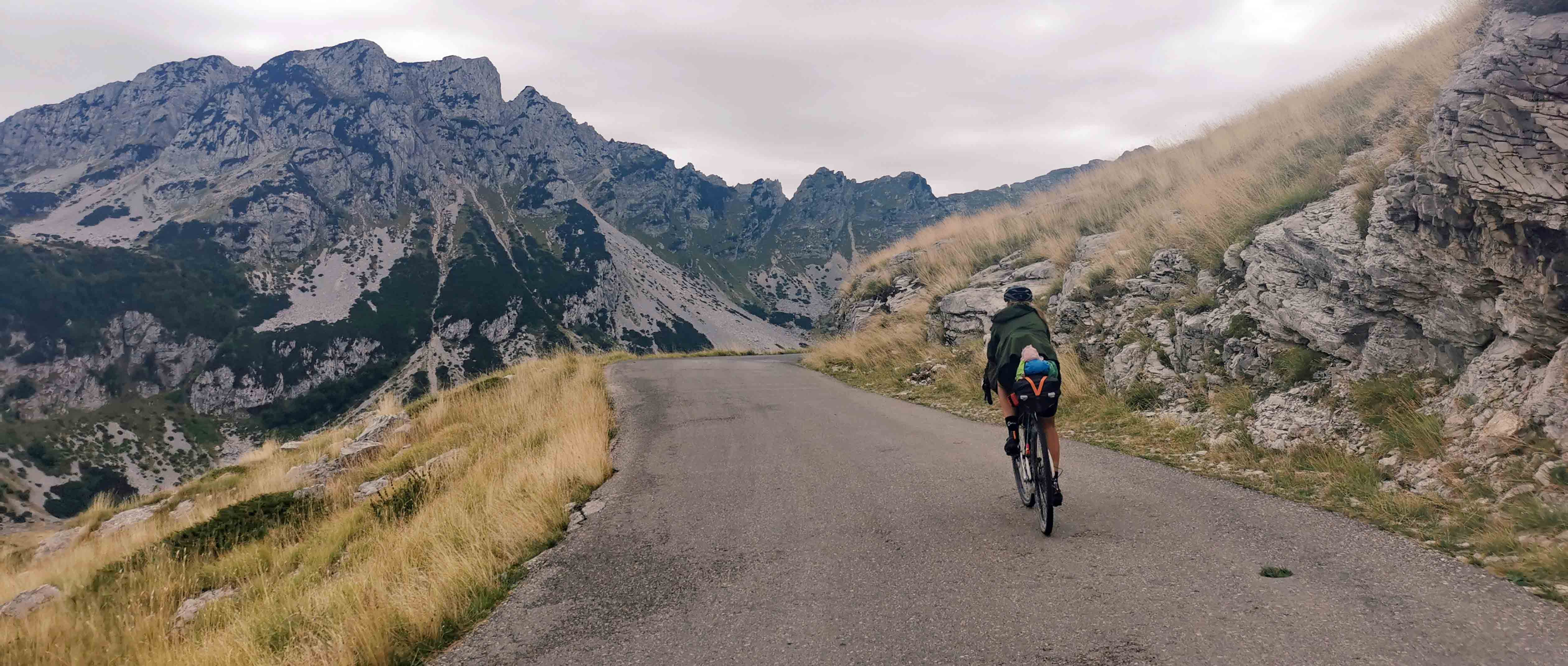
After a short break with potato soup to warm up, we venture into a surreal mountain world, made no less impressive by the overcast sky. The yellow of the dry grass dominates against the rugged, grey rock faces. Descent follows ascent and ascent follows descent. Despite our somewhat heavy legs, not fully recovered after the short night, the sheer magnificence of Durmitor captivates us. There's simply no way not to savour every moment in this extraordinary setting.
As we gradually bid farewell to the national park and pedal towards our campsite for the night, an unexpected surprise awaits. Focused on Durmitor, neither of us anticipates the spectacular descent that follows. For the third time, our timing is absolutely perfect and we commence the descent in golden light. The view suddenly opens up, revealing a steep gorge with a mesmerising turquoise lake. Our jaws literally drop; the view is nothing short of breathtaking. We navigate through tunnels carved into the rock, seamlessly blending into the natural landscape. Crossing the bridge over the lake, a profound sense of bliss and gratitude overwhelms me.
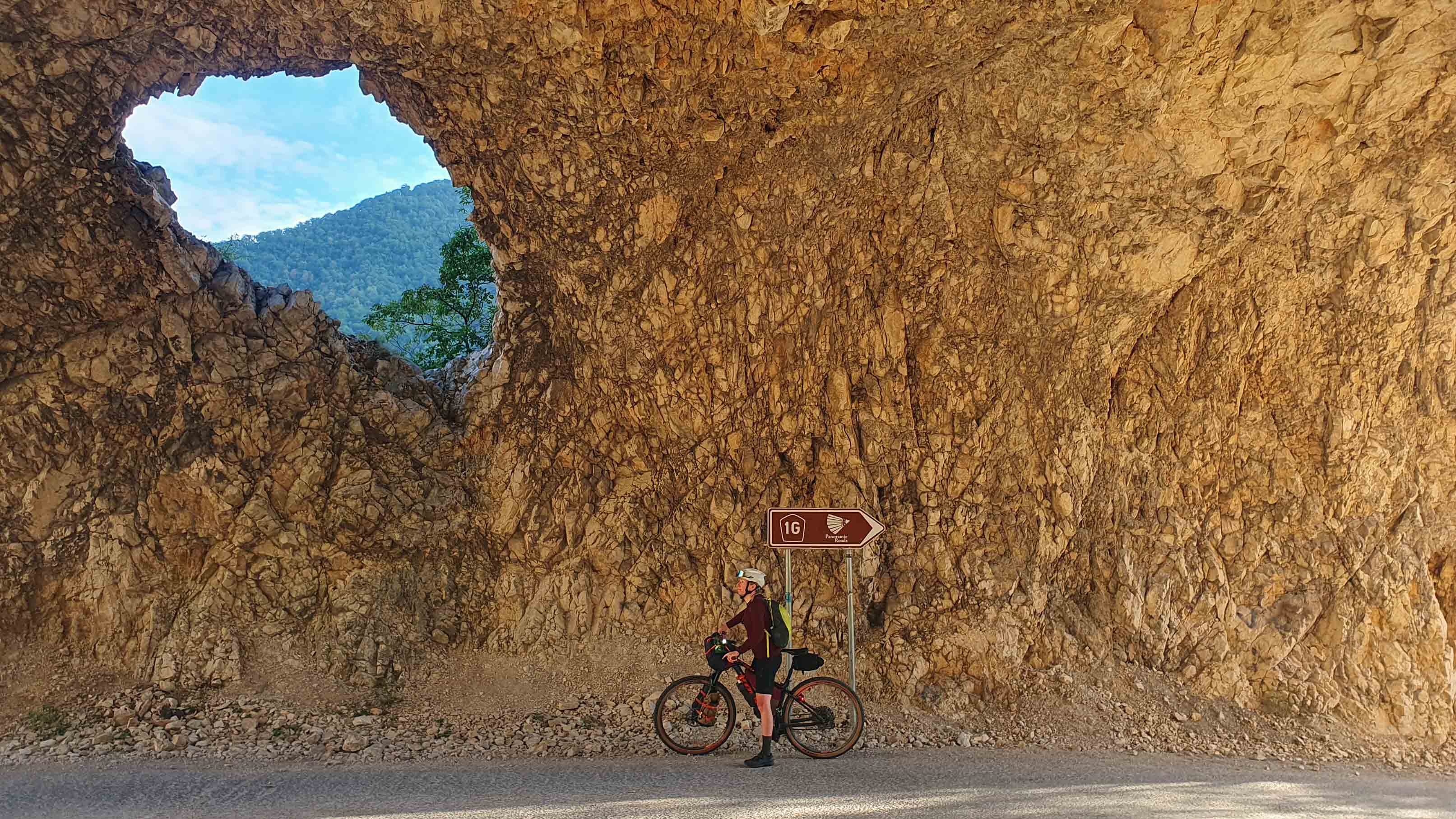
The following morning, we cross the border into Bosnia and Herzegovina. The first thing we notice is that the condition of the roads deteriorates and in the coming days we ride longer stretches of gravel. The scenery remains both spectacular and diverse. We cycle through forested areas for the first time, which are explicitly signposted as bear territory. Following a climb under the hot sun, we take a refreshing swim in a mountain-surrounded lake. The subsequent ascent towards Mostar is a real highlight - a gentle gradient and fantastic gravel road, highly enjoyable on the gravel bike. The landscape turns more rugged and wild again, a bit like the people here – they seem a little more reserved towards strangers than we have experienced so far.
The road to Mostar winds its way down to the river and once again we roll into the setting evening sun with a breathtaking view. Mostar is the first large (and more touristy) town we have encountered since our start in Durrës. As we sit in a café overlooking the famous bridge over the Neretva river the next morning, both of us are somewhat overwhelmed by the hustle and bustle.
Moreover, this is where we split up - Lissa heads towards Split to catch a ferry back to Italy, while I continue on the route she had planned towards Trieste, having a few extra days to spare. As I set off and we say goodbye, I feel a little uneasy. We've been traveling together for twelve days, always able to rely on each other. We shared impressions, endured challenges and relished moments together. Not once did we argue; instead, we evolved into a real team. In short, it turns out that Lissa is my perfect bikepacking buddy.
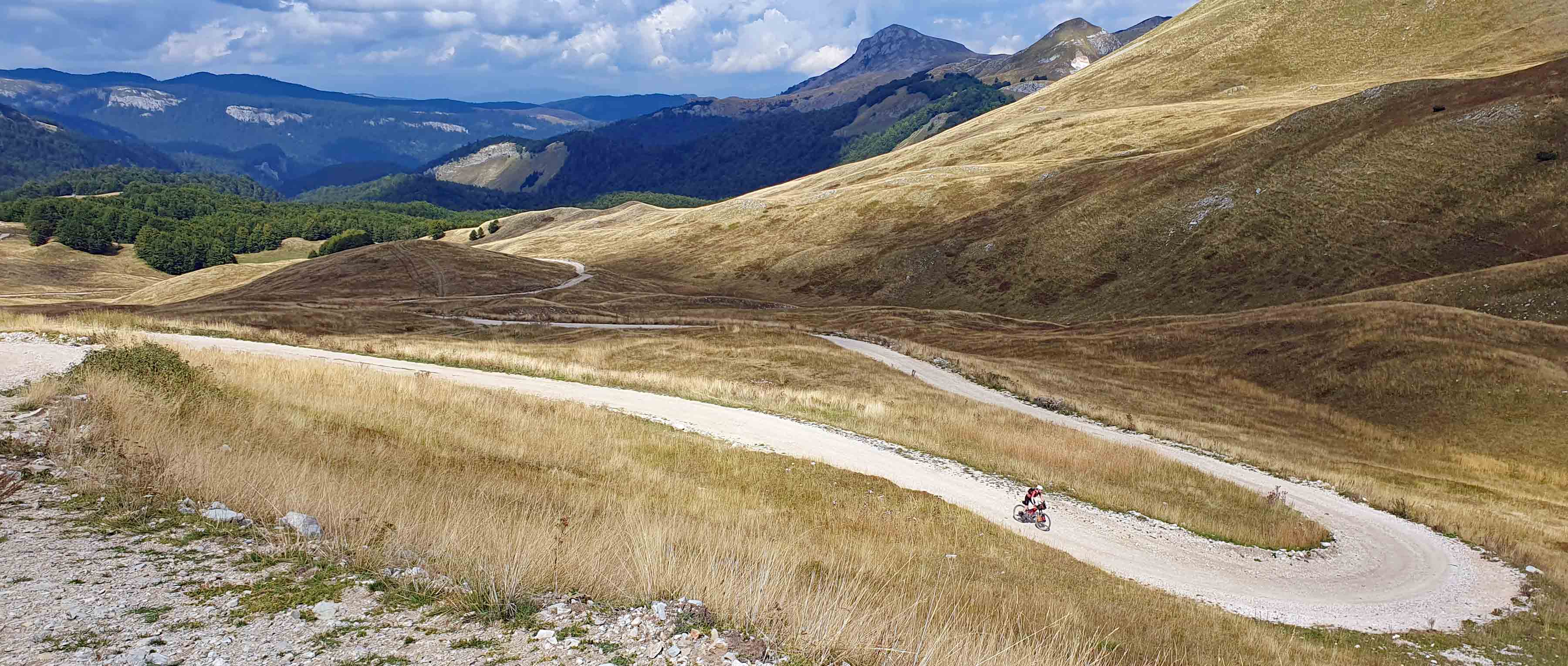
Perhaps because I am now riding solo, the most strenuous part of the tour follows after Mostar. I struggle up a steep climb in the blazing sun and desperately (and with little success) try to take a break in the shade of a small bush halfway up. What follows is a ride through a beautiful, rocky landscape and while the road is initially tarmac and easy to ride, I'm soon pushing my bike more frequently than I am riding it. Time is running out as I laboriously inch my heavy bike uphill through loose and coarse rubble, progress taking an agonisingly long time. I'm slowly running out of water and a technical descent demands a huge amount of concentration. The two campsites I aim for don't exist. I'm exhausted and desperately check the map - theoretically wild camping would be an option, but I don’t have enough water for cooking.
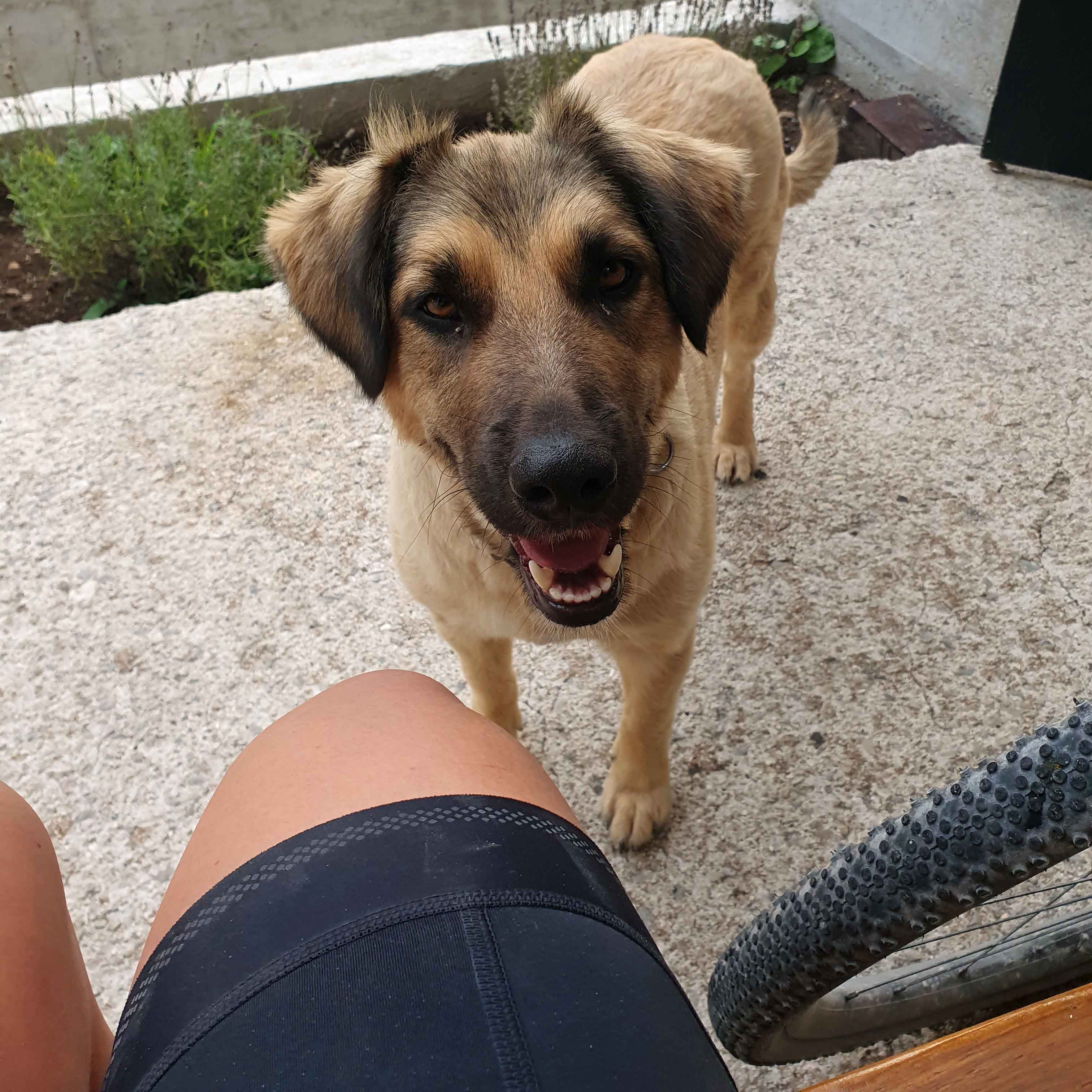
In a last, almost desperate, attempt I leave the route and cycle to a tourist information point which, according to the internet, is also a B&B. As I turn the corner, spot the open door and am greeted by a friendly dog, a wave of tension lifts off me. The friendly hostess speaks both German and English, puts me up in a double room and even provides dinner. After today's experience, I re-plan the route, trying to avoid long gravel sections. With only five days remaining until I need to be in Trieste, I cannot afford another day like this.
Over the next day and a half, I rush towards Croatia. I cross forests – singing loudly to ward off bears – cycle past deserted villages, am chased by dogs and enjoy the diverse landscape. Yet I am aware that I have to cover 120 kilometres per day to make it to Trieste on time.
Crossing the border into Croatia, I am greeted with nothing but friendliness. People wave, construction workers clap their hands, my water bottles are refilled by people at the side of the road. The transition into Croatia feels like a warm embrace, a stark contrast to the somewhat distant encounters experienced in Bosnia and Herzegovina. The landscape remains impressively varied and I cycle through gorges, over mountains and through vast scrubland.
Three days before I need to be in Trieste, the first raindrops begin to fall. I hastily pack up my belongings in the morning and find refuge on the covered veranda of the campsite, hoping the rain will subside, but it persists. Too bad, because today I have a highlight to look forward to - the ascent into the Velebit Mountains, passing through the film-set scenery of the Winnetou films. I finally set off and get soaked on a 20 kilometre ascent. A thunderstorm looms on the horizon and after 13 kilometres of climbing, initially on tarmac and later on gravel, the clouds are so low that I start looking for cover.
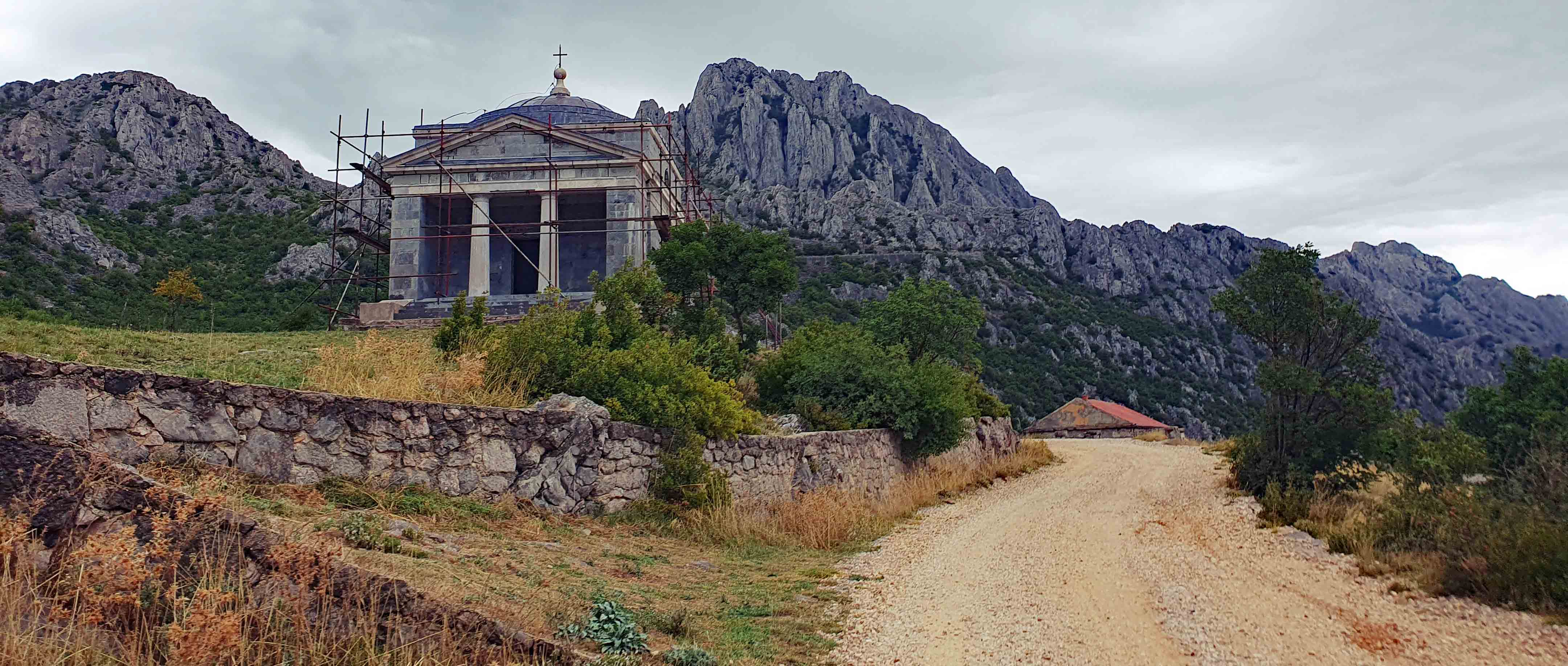
Unexpectedly, a chapel appears on the roadside and I gratefully take refuge. Shortly thereafter, the thunderstorm rages around me and the wind pushes the rain under the canopy. Nevertheless, I am grateful for the roof, because I feel slightly terrified being stranded on a mountain amid thunder and lightning. Overall, I spend more than two and a half hours huddled in a corner and since reaching today's destination is no longer feasible, I take advantage of the time to adjust my plans.
As the weather finally clears, I retrace my route and head back down the hairpin bends that I struggled up earlier. I cycle along EuroVelo 8 to Zadar, to take a ferry to Mali Lošinj the next day. After an 80 kilometer sprint across the island to the north of Cres, I enter the harbour 20 minutes before the last ferry departs. I spend the night in an apartment right on the coast, with 115 kilometres to Trieste left to ride for the final day.
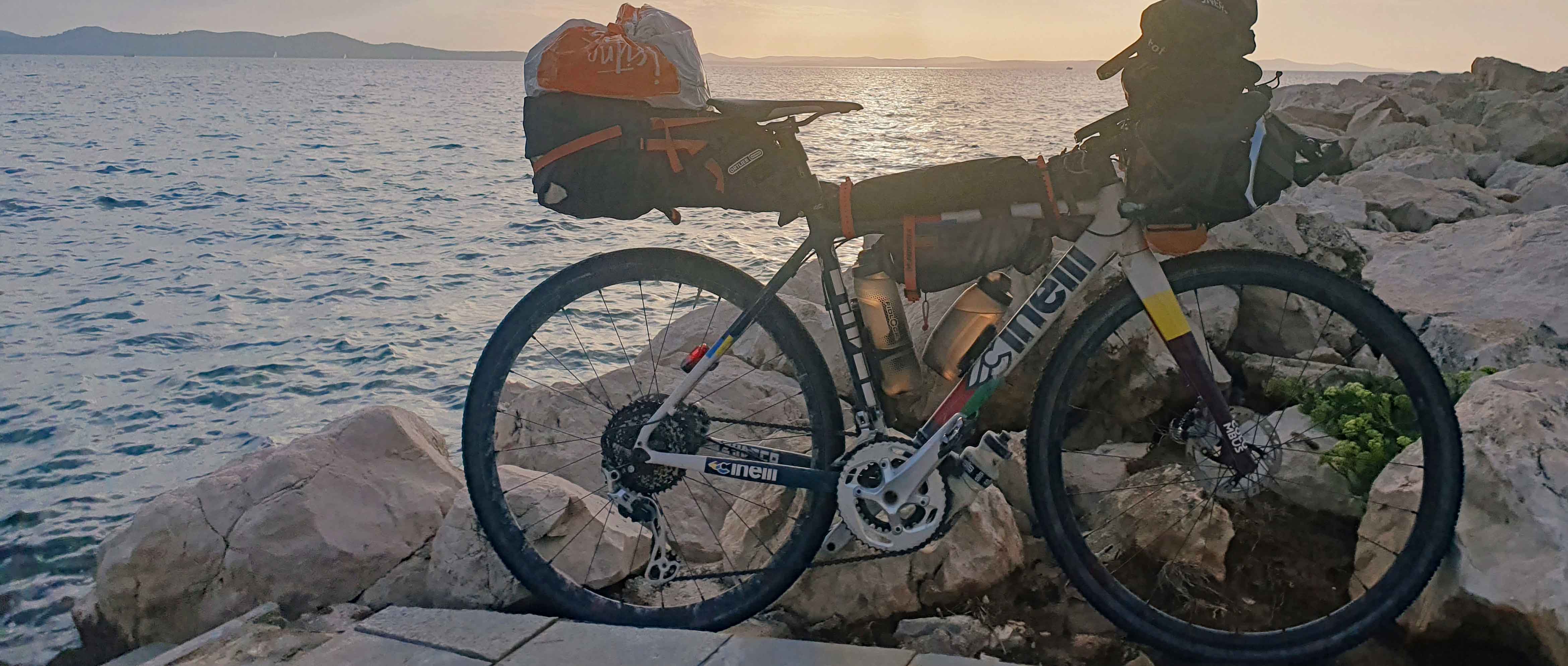
Unfortunately, the last day is a wet one again and I don't notice much of my surroundings. Within the first 20 minutes I'm thoroughly soaked. The entire day is wet and cool and creates a huge mental strain. When I finally roll down a former railway line into Triest in the late afternoon, the sun makes a brief appearance for a spectacular finale to an incredible tour.
On the last few metres, the realisation sets in - this is it, a perfect bikepacking holiday has come to an end. A total of 1,480 kilometres with over 25,000 metres of altitude, without a single breakdown or technical issue. No arguments, nothing I would change. The Balkans blew me away, the diversity of the landscape, the people and the culture - I wholeheartedly recommend the region to anyone who longs for a bit of wilderness, beauty and challenge.
If you’ve been inspired by Nora’s story, you can retrace the route that she and Lissa took here: